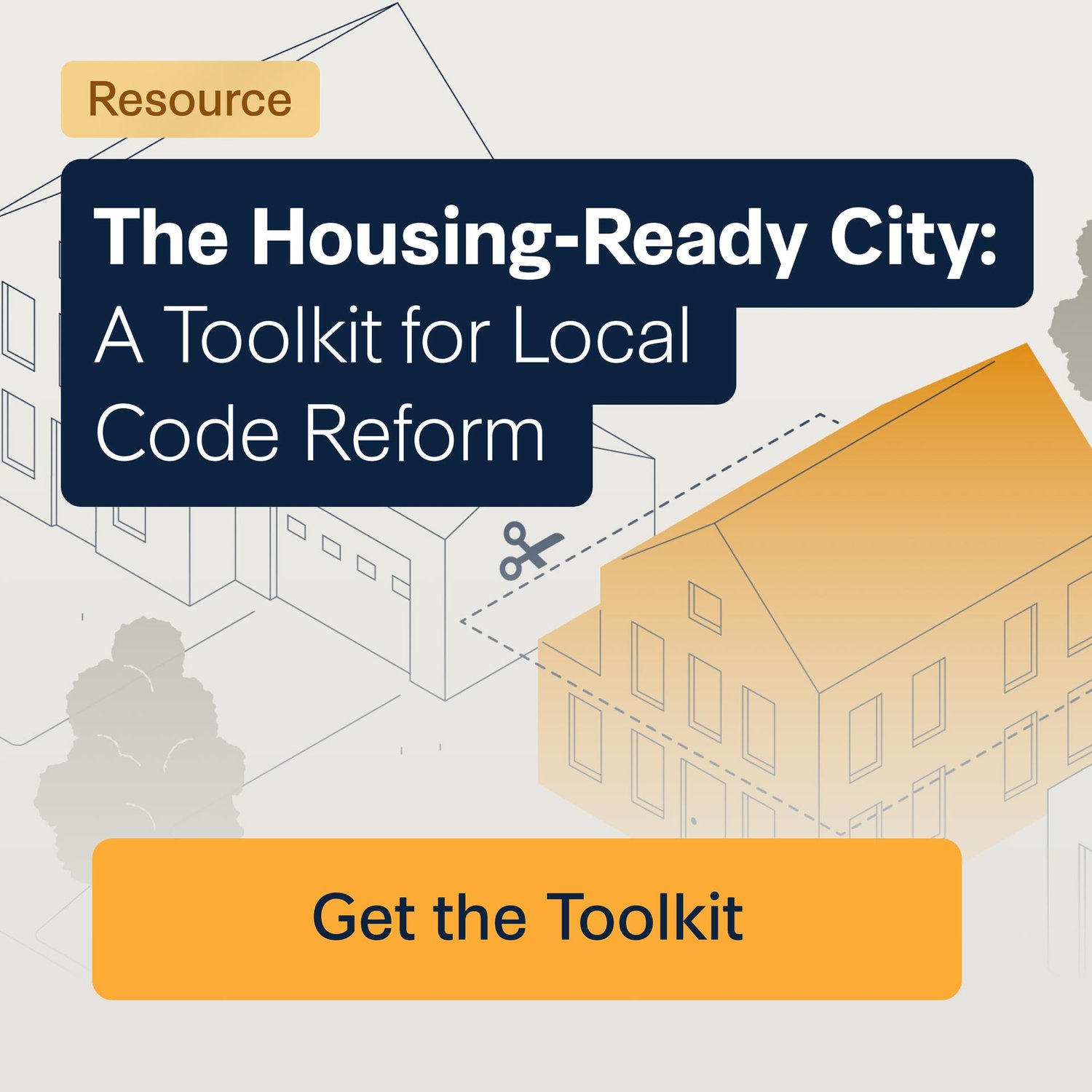This “Multigenerational Roommate House” Shows How To Heal the Housing Market
The floor plan of Monte Anderson’s “Multigenerational Roommate House.” Each unit has a private entrance, bathroom and kitchenette.
Monte Anderson’s “Multigenerational Roommate House” is only legal because of a technicality. But it shows how making single-family to duplex and triplex conversions legal by right can nurture a healthier housing market.
Anderson lives in a first-ring suburb of Dallas, Texas, in a large house originally built for a 1970s-era nuclear family — mom, dad and 2.6 kids. Multiunit homes are technically not allowed in the neighborhood. But after Anderson purchased it in 2021, he applied some savvy interpretation of local zoning rules to transform it into a legal, owner-occupied, multiunit home for five single adults ranging in age from almost twenty to over 70.
Each unit has a separate entrance, bathroom and kitchenette where the occupants can enjoy their own privacy. In many ways, this is a return to traditional housing patterns. Multigenerational and roommate living was more common in American cities before restrictive zoning laws made it illegal to have more than one household in a single-family home. By allowing homeowners to convert existing houses into duplexes or triplexes, cities can give residents the flexibility to live where they want at a price they can afford.
In a neighborhood where zoning allows duplexes by right, a homeowner with an aging parent could create a small, independent living unit instead of paying $5,000 a month for an assisted living facility. A young adult just starting out could afford to stay in their neighborhood rather than being priced out of the community they grew up in. And people like Anderson, who love the energy of having people around but also value their privacy, can enjoy both.
Allowing duplex conversions isn’t just good for homeowners — it’s a boon for cities. Anderson purchased his property for about $300,000 when it was a run-down, outdated house. After converting it into a multiunit home, it is now valued at over $1.2 million. That’s a quadrupling of taxable value — without requiring the city to build new infrastructure, extend roads or increase public services.
In cities that make this type of housing legal by right, thousands of stagnant properties can be improved, raising property values, increasing tax revenue and revitalizing aging neighborhoods. Instead, zoning laws force homeowners to jump through absurd bureaucratic hoops to make these modest, commonsense changes.
Anderson had to design his house around these outdated rules, installing hotel suite-style doors that lock from each side to technically maintain a single-family designation. He also had to avoid installing full kitchens in secondary units because they would trigger a “multifamily” classification. These legal gymnastics only add cost and complexity.
“It’s ridiculous that this kind of housing isn’t legal everywhere,” Anderson says. “Nobody wants these big empty houses just sitting there, deteriorating. This is a way to make better use of what we already have.”
This isn’t about turning neighborhoods into high-rise apartment districts. It’s about giving families and individuals more housing choices while keeping communities strong and intact. When a homeowner like Anderson can legally and affordably create housing that meets modern needs, everyone wins.
Learn how to bring more housing to your city. “The Housing-Ready City: A Toolkit for Local Code Reform” presents six code reforms that local officials can implement today with the authority they already have. It explains how to implement these reforms and provides real examples of places that have already done so.







Lauren Ronnander, the Director of Communications for Strong Towns, is an actual idealist who loves making things and double-spacing the end of sentences. Before joining the Strong Towns team in 2020, she worked as a journalist and an editor. She lives with her husband and an almost uncountable number of animals (including cats, dogs, sheep, chickens, and rabbits) in a super-awesome neighborhood in the American Midwest. Her experience in the Alaska Bush, downtown living in an up-and-coming Midwestern city, and now residing in a rural Chippewa Valley, Wisconsin, community has provided her with precious insight into the many ways our places can grow stronger.
Are you a member of the media and want to talk about Strong Towns? Email Lauren at [email protected].